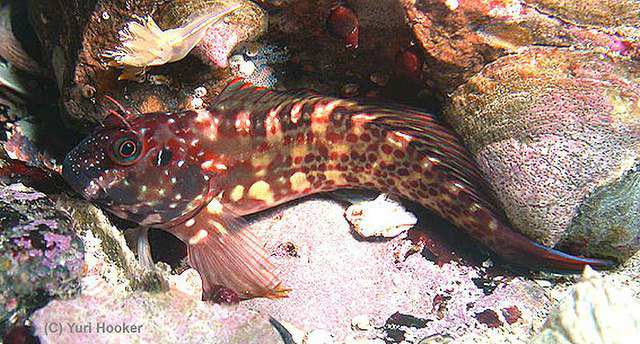| Blenniidae (Combtooth blennies), subfamily: Salariinae |
| 25.1 cm TL (male/unsexed) |
|
demersal; marine; depth range 0 - 10 m |
| Eastern Pacific: Panama (Ref. 9280) to northern Chile (Ref. 10696). |
|
Dorsal spines (total): 11-13; Dorsal soft rays (total): 16-18; Anal spines: 2; Anal soft rays: 18-20. With fewer than 70 dentary incisors and a reticulated color pattern. |
| Adults inhabit rocky coasts (Ref. 9280). They feed on plants, small mollusks and crustaceans (Ref. 9280). Oviparous (Ref. 205). Eggs are deposited in mollusk shells or on rocks (Ref. 9280). Larvae are planktonic, often found in shallow, coastal waters (Ref. 94114). Used to prepare a soup called 'borracho' which evokes slight intoxication and tiredness; these effects, however, are of short duration (Ref. 9280). |
|
Least Concern (LC); Date assessed: 25 May 2007 Ref. (130435)
|
| other |
|
Museum: Callao, NMW 73438 (syntypes of Salarias gigas); CAS 5544-5550 (paratypes of Ophioblennius xiphiodon). Chinchas, CAS 5553-5556. Mazorka I., Huauru Grp., USNM 128188 (holotype of Ophioblennius mazorkae) (Ref. 10696). |
Source and more info: www.fishbase.org. For personal, classroom, and other internal use only. Not for publication.

